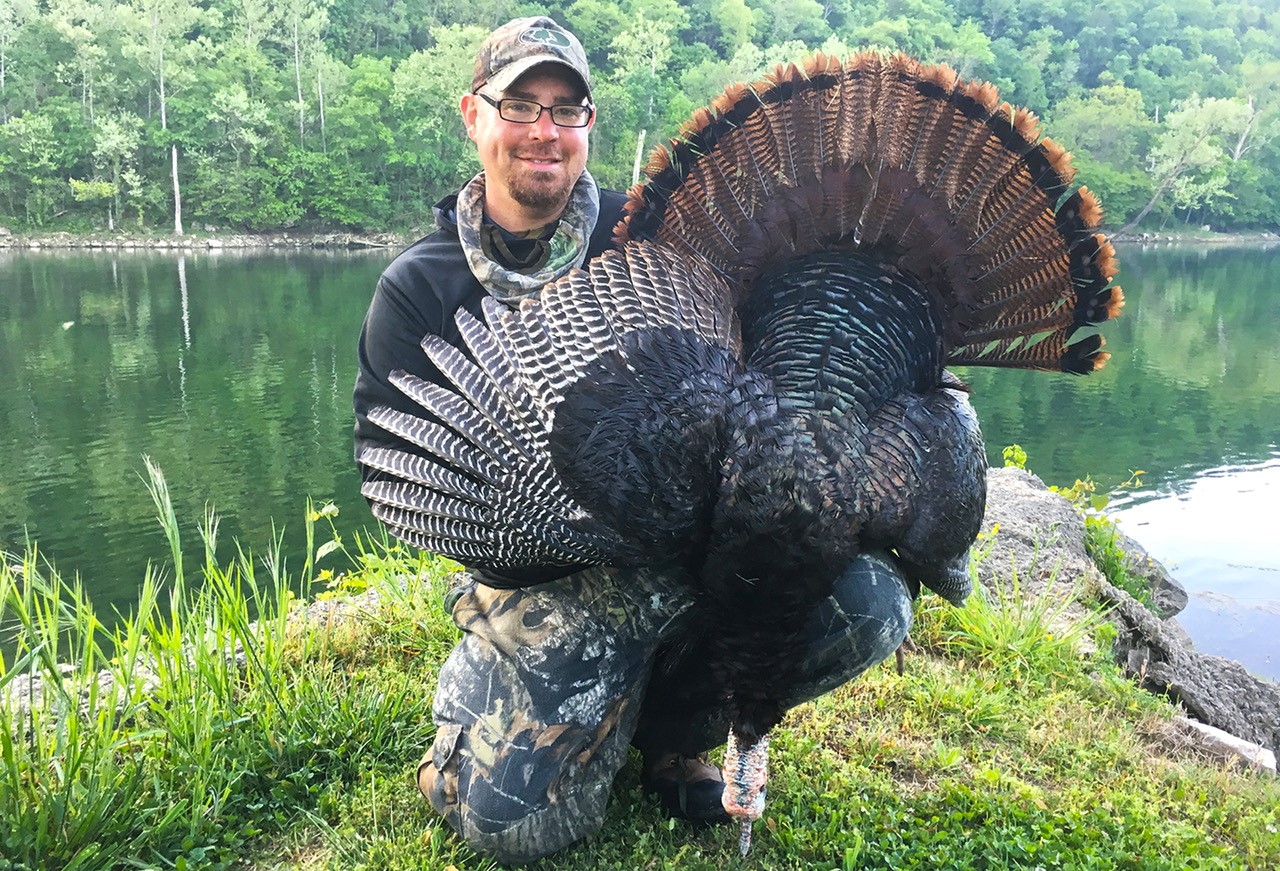The Decoy Dilemma
OutdoorHub Reporters 03.28.18

Why do we forcibly rise well before nautical twilight, pull on mud-caked boots to hastily navigate pitch-black timber bottoms beneath roosted birds? What is it about a well-conceived ambush that pays out more ROI than a bond on Wall Street?
Maybe it’s the con itself we love so much.
A crisp morning that ends with a mature bird doing the upside down bicycle in the middle of the decoys is a victory worth reminiscing about for years.
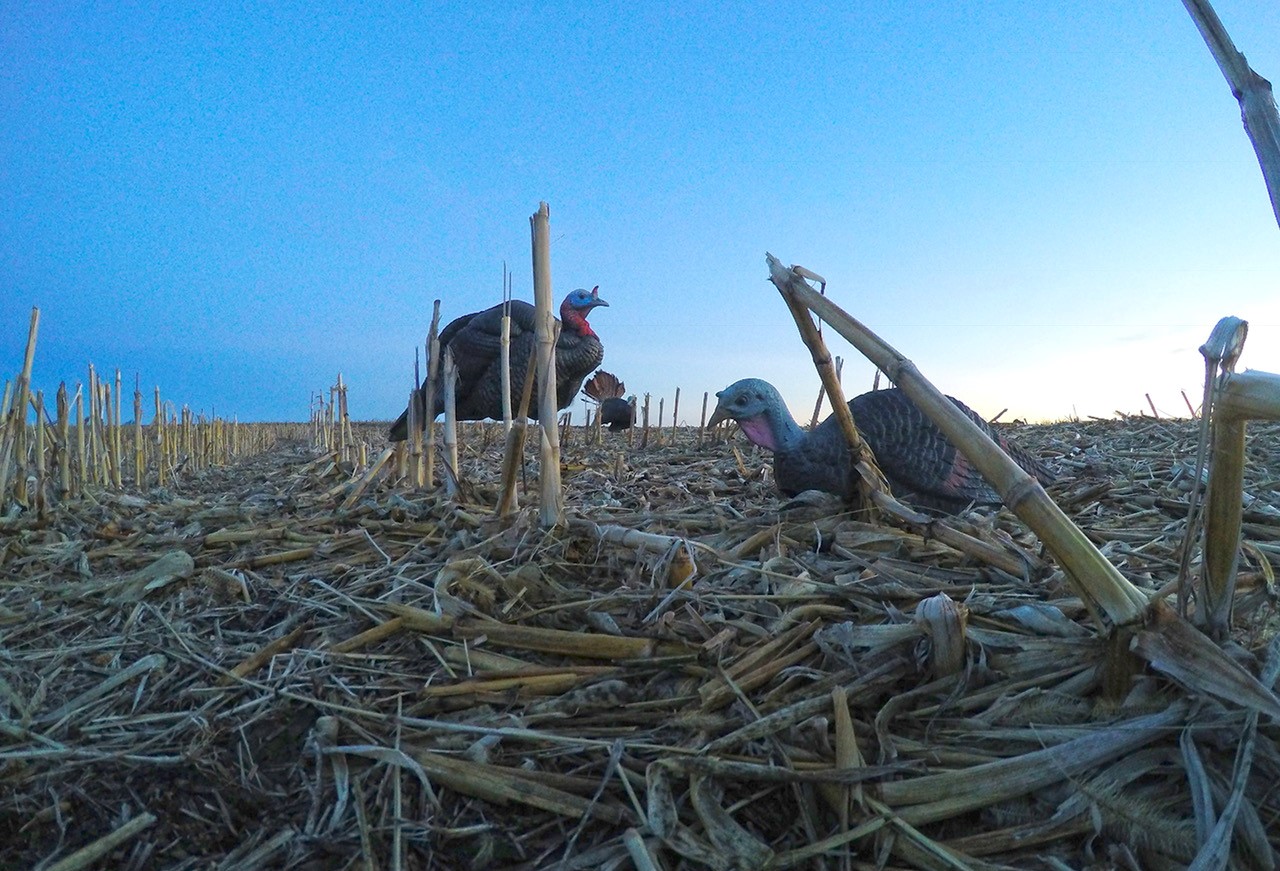
There really isn’t a better way to live.
But just like everything else in life, the game evolves.
Are the days long gone when a single decoy and pot call will be adequate weaponry to outsmart and overcome a wary old tom? Quite the opposite; in fact, I believe the hunters who keep simplicity in their arsenal will avoid the dreaded bowl of tag soup.
One of the greatest aspects of this sport is you can achieve success through nearly any technique or tactic that you prefer — within the confines of the law, of course.
If you prefer to hunt from a blind with a sizable turkey decoy spread, or from the base of a live oak with just a mouth call, you can do it your way.
Regardless of your preferred method, there is a decoy that best suits what time of year you are hunting, location, terrain and bird temperament. Across my travels and experiences, I’ve found that different properties hold birds of various temperaments — some places have numbers of more aggressive toms, while others more passive.
I have no explanation for the different behaviors other than how they interact with different decoys, but some places breed birds that look for confrontation, while others seem to avoid it.
But decoys, too, have changed dramatically over recent years. Knowing what, when and where to employ them is the challenge we’ll unlock herein.
New Age Decoys
There was a time when a black trash bag could draw a gobbler into shooting range, and not too long ago the only options available to spring turkey hunters were $12 fold-up foam decoys that lost their “realism” and luster before the season was over.
And they worked, no question about it.
When Dave Smith Decoys were introduced to the market, I swore I’d never spend that kind of money on mere turkey decoys. Soon, however, I enjoyed a personal experience that radically changed my mind. I watched two turkeys so aggressively approach and attack the jake decoy that they broke the metal stake.
Broke it.
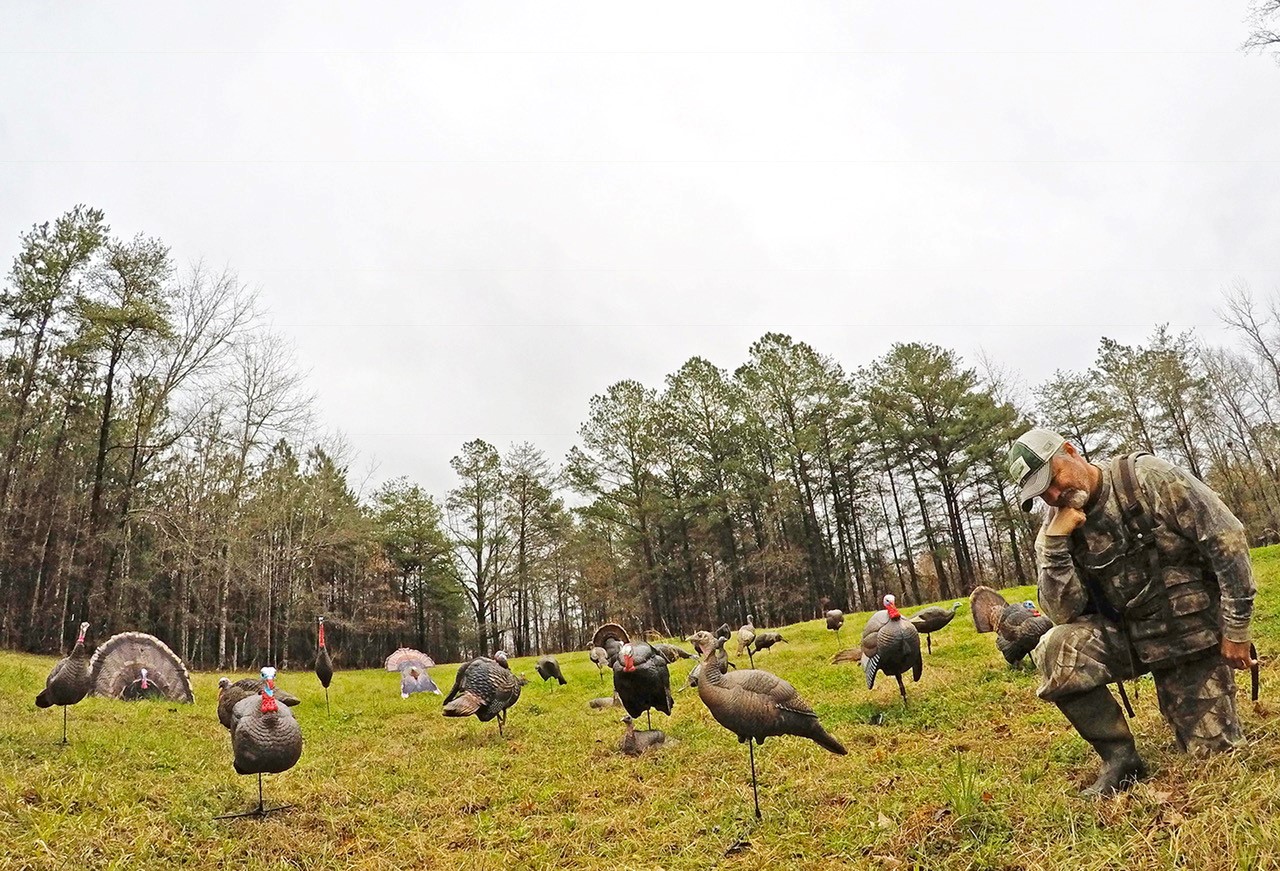
I wasn’t totally convinced, but I’d been hearing similar stories from other hunting buddies who had made the DSD investment. The common theme was, “the turkeys just act differently around these decoys.”
I decided to buy myself a set and give them a shot. Since, many a bird has met his demise by gun and bow at the feet of these high-definition decoys.
Nowadays, the options are seemingly endless, and they’re not cheap.
I believe that the wild turkey has a very defined hierarchy. In other words, they have a specific place within their “society” and they know that position very well. When an opportunity arises to challenge that position and climb that ladder a rung or two, a fight occurs — and it’s usually intense.
This is why turkey decoys, under the right scenario, are so effective, Additionally, the impressive realism covering modern decoys has made average turkey hunters lethal.
There are a lot of excellent options out there, but if there is a downside: They are expensive.
The turkeys simply believe the decoys are the real deal — and that’s not something you can put a price tag on.
Decoy Posture
All things considered in our modern-decoy era, realism and body position — or posture — are the most important features that will ultimately help birds finish their approach. Certain body postures demand an aggressive response from a dominant bird, but at the same, the same posture might intimidate a more passive bird, which could actually push him away.
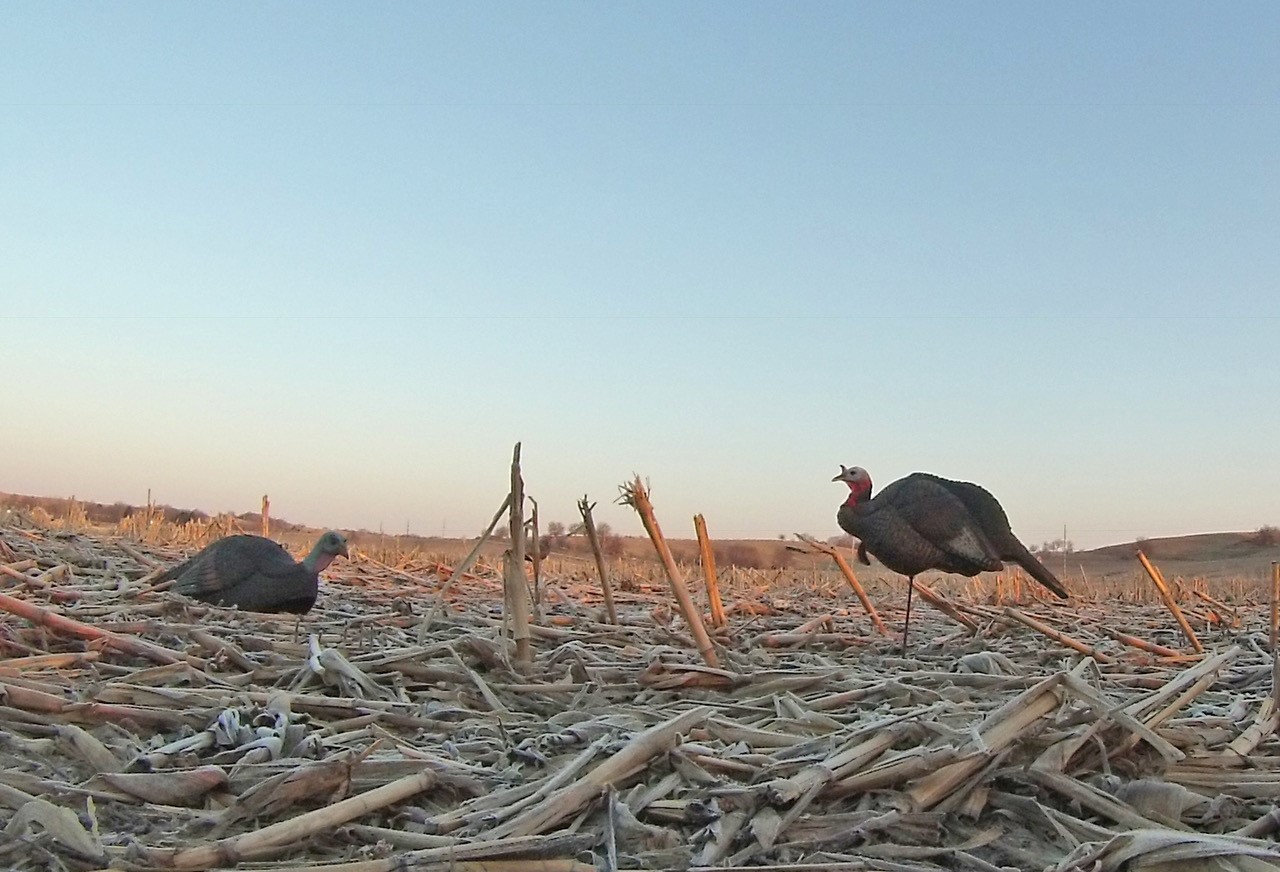
To the wild turkey, posture signifies much, and deciphering which is the strongest for your given situation will take time, scouting and trial and error. Let the birds dictate to you what creates an attractive scenario.
Postures range from a breeding hen to a lone feeding hen, a 1/4-strut jake to a 1/2-strut jake, then a breeding pair to a full-strut decoy. Again, depending on a lot of factors, each of these options will pay out big dividends when a hunter considers bird population, hunting pressure and time of year.
My suggestion is to start conservatively and upgrade from there.
Options Plenty
Flextone’s Funky Chicken: If there’s a decoy that begs to be throttled more than the Funky Chicken, I’ve yet to see it. This decoy’s wimpy profile presents ample opportunity for a live jake or tom to confidently confront it.
The Funky Chicken sits tall and skinny, and is a great option all year long, especially during late season in a situation where other hunters are pressuring the property with aggressive decoys. If you encounter a bird that tends to shy away from 1/4-strut to full-strut dekes, this one will bring them into shotgun range, and likely entice a brutal beat down.
The Chicken Combo
Partner the Funky Chicken with a Thunder Chick Feeder nearby, and an additional feeding hen or two to create a realistic scenario where a lone, wimpy jake is well out of his league and needing to be knocked down a notch or two.
Flextone Funky Chicken: $29.99
Flextone Thunder Chick Upright: $49.99
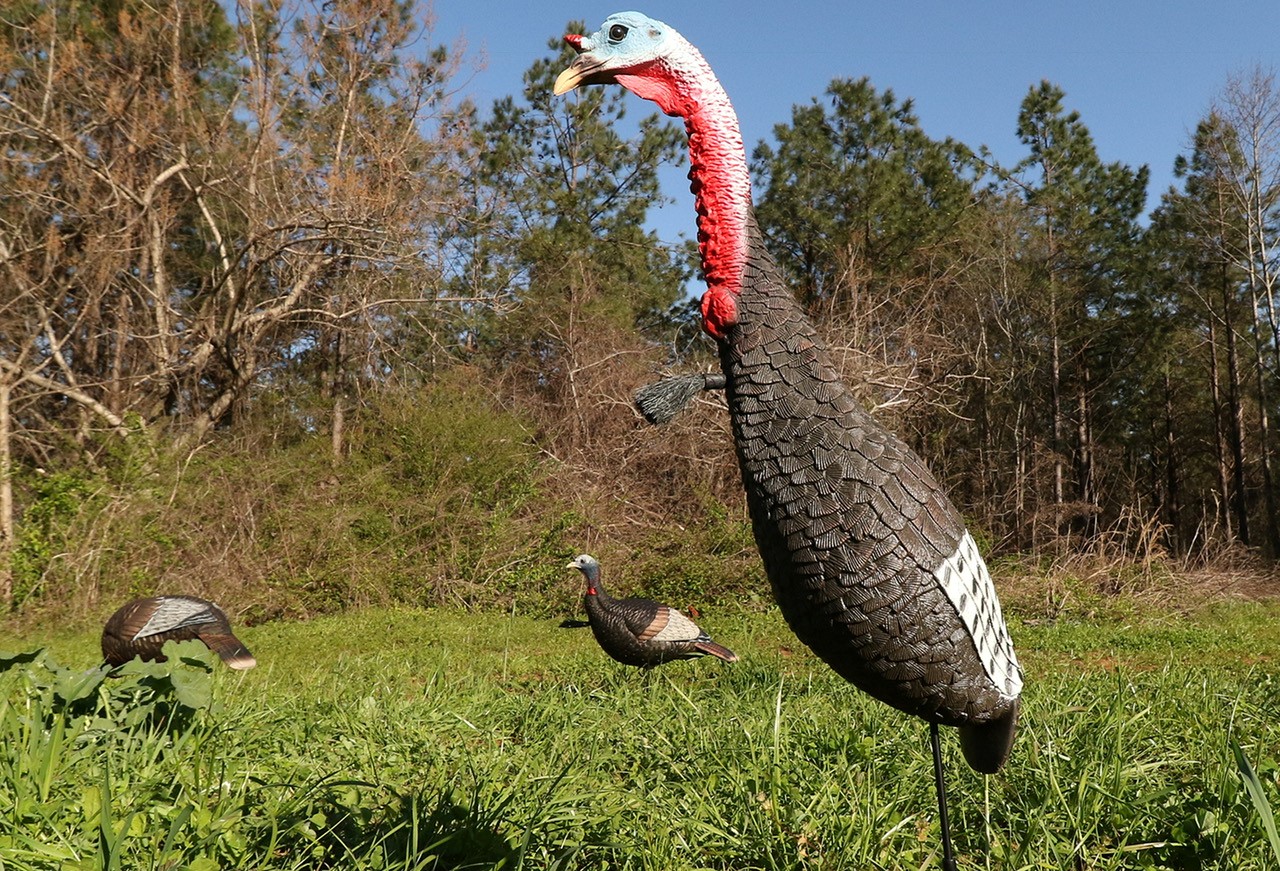
Take the aggressive approach up a level with this hearty combo. Consider the years when your property is enjoying a bumper crop of jakes: They’ll typically hang together for the entire season, and will often gang-up on other gobblers. Strength in numbers often rues the day. However, dominant toms won’t tolerate any number of jakes, especially if there are a couple of older birds that hang together — they’ll come running and break up the jake squad without hesitation.
By combining the Funky Chicken with the Thunder Jake, Thunder Chick Feeder and the Thunder Chick Upright placed in a breeding position you have a “ménage à turk” that begs for a battle. With the aggressive four-decoy combo, you do run the risk of pushing a passive, subdominant tom away. But when a mature boss gob shows up, it’ll be a show well worth the risk.
These decoys jam a lot of realism into an attractive package, but they don’t fold up and transport as easily as some of their counterparts previously discussed. However, that eliminates the need for heat in the shower or with a hair dryer to restore their natural form.
I really love the built-in stake system and high-definition finish.
Flextone Thunder Jake: $49.99
Flextone Thunder Chick Feeder: $49.99
Tip: This bunch doesn’t come with a decoy bag, I found several laundry bags with shoulder straps that have worked well in the past. In fact, you can load up all four dekes with this option for only $15.
Hunter’s Specialties Strut-Lite Family
Take aggression up a notch with a family of three. The Strut-Lite dekes bring aggression and realism to the table right alongside mobility, which is one of the biggest sacrifices a hunter has to make with the ultra-realistic decoy options.
The HS decoy family creates the flock effect complete with a semi-aggressive jake that most toms can’t help but confront. The Strut-Lite upright hen is in position to indicate she is ready to breed, which toms also find irresistible. The final piece to the puzzle is a feeding hen that puts approaching birds at ease with the situation.
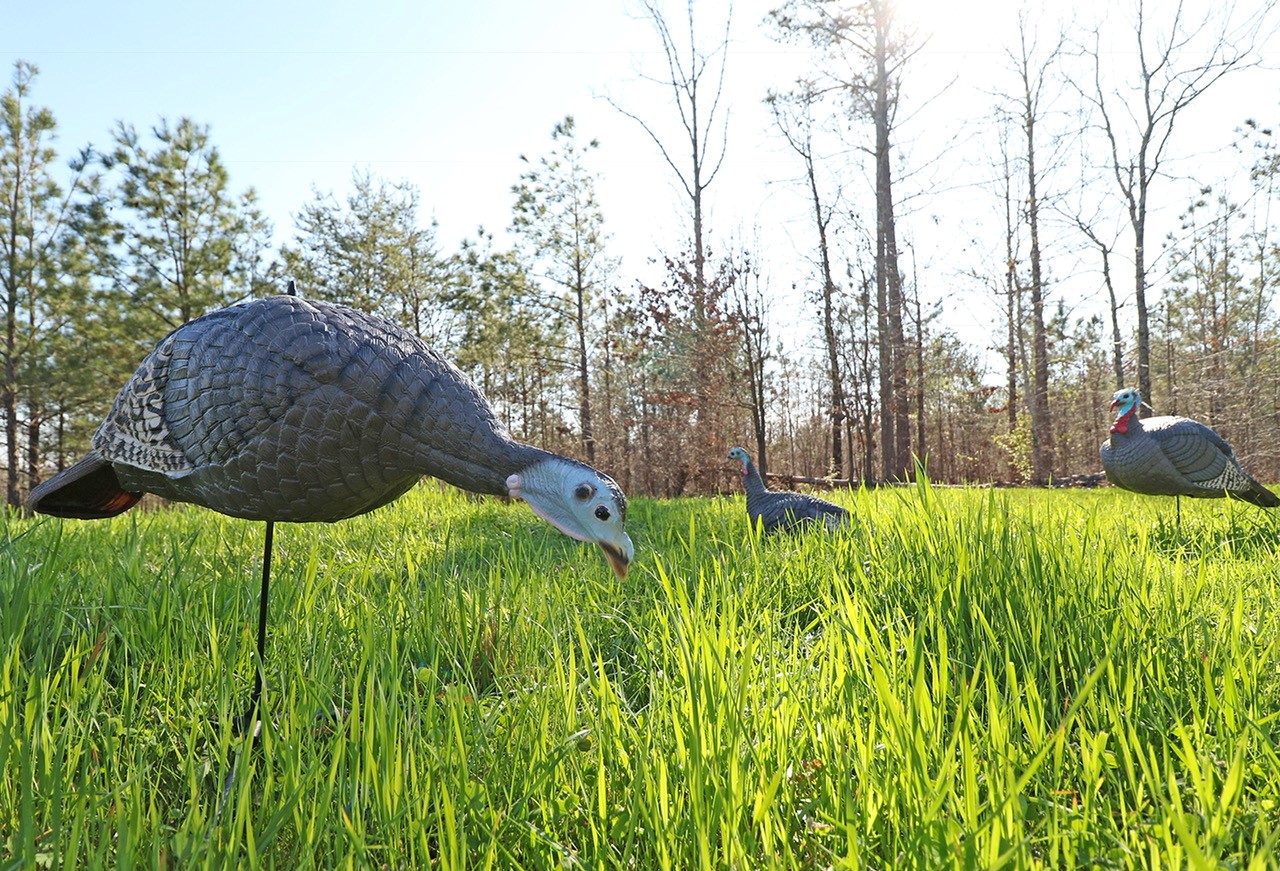
An attractive feature with these decoys is they can be folded up and stuffed in a turkey vest for easy transportation. But, hunters can also carry them in full position inside an HS Decoy Bag to save time during set up. These decoys are also very nicely priced for a three-decoy pack. Here’s how I pack them.
HS Strut-Lite Decoy Combo: $99
Tip: Right after you purchase these decoys, take them out of the package and place them near a warm, sunny window and let them expand. During the shipping and packaging process, the decoys are compressed down and might retain some unsightly creases before you give them a little love. But a few minutes in a hot shower, or under a hair dryer will put the correct shape back into each decoy.
Primos Gobbstopper Turkey Decoy Combo
Primos has been in the turkey business since the company’s inception, and you can buy any of their products with confidence. The Gobbstopper combo is no exception. I love the high-definition paintjob on these dekes, plus like the HS Strut-Lites, these decoys will collapse and pack for easy sneaking.
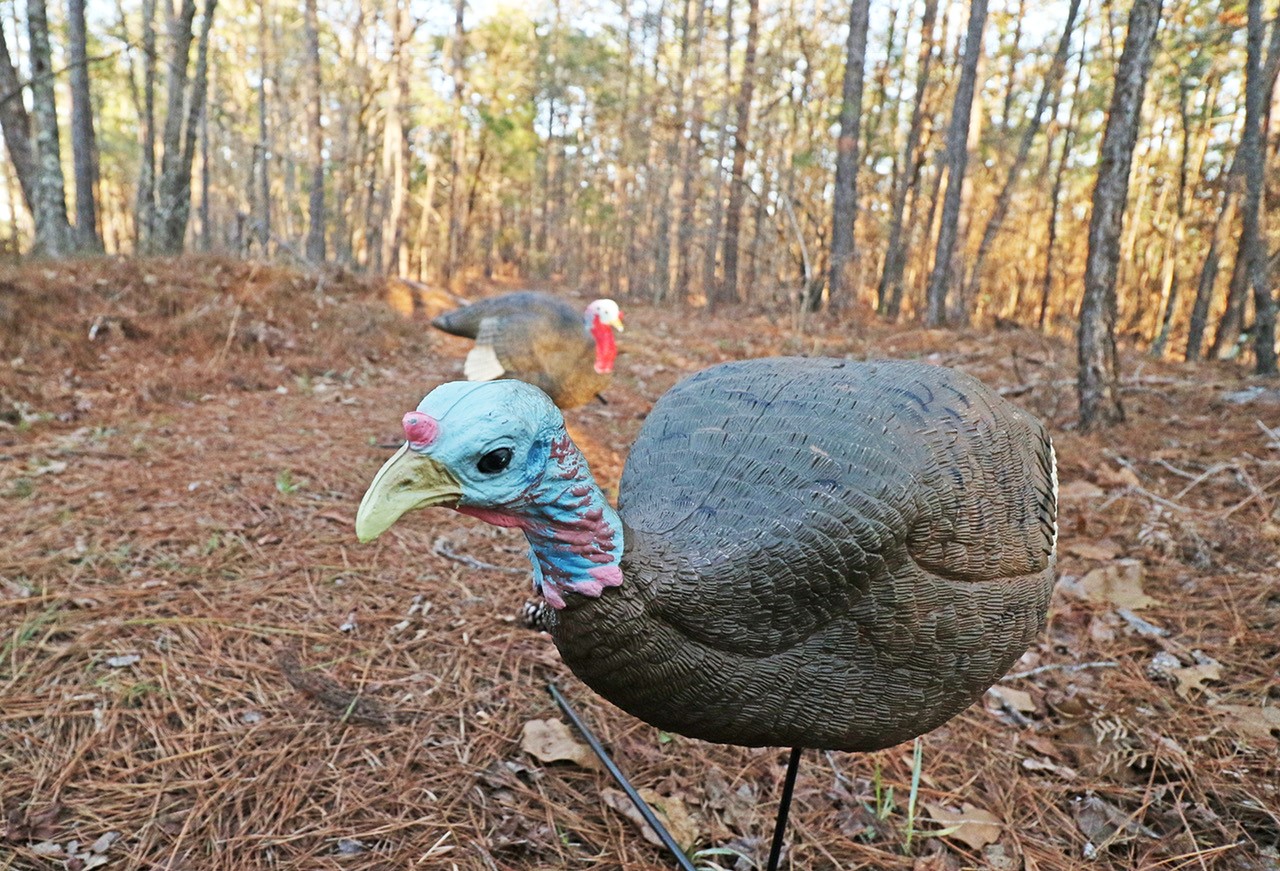
Two things I really like about this combo: The jake’s posture is what I’d call semi-aggressive, even at half strut. I think with his head back a little further than most half-strut dekes, most approaching toms will find this bird easy to whip, which will close the deal in most instances. Also, the hen has two locations to place the stake, one is slightly forward for an upright or breeding position, and the location to the rear will position the decoy in a more passive or feeding position.
If you’re only going to take two dekes with you, the Gobstopper Combo is a good choice, and at a very affordable price. The package comes with a mesh carry bag and two stakes.
Primos Gobbstopper Decoy Combo: $71.45
Tip: These decoys will also need some time beneath a sunny window, a hot shower or a hair dryer to regain their original form.
This family of decoys takes it up a notch with amazing realism and an unlikely mobility factor that puts these things in a league of their own. LCD stands for “Lifelike Collapsible Decoy.” In short, that means they are inflatable. But don’t be fooled, these are not your grandpa’s balloon-style decoys. They are, indeed, rugged and durable enough to withstand a flogging or attempted lovemaking session. (Did I just say that in a turkey-hunting story? Wow. There’s a first time for everything.)
I love the aggressive posture of the 1/2-Strut Jake. I think this is one of the most aggressive postures a decoy can have, and it certainly invites a dominant or aggressive bird in for a closer look. The company says, “this decoy is telling the tragic tale of a young gobbler living dangerously outside of his pecking order.” That description makes me laugh, but they couldn’t be more correct.
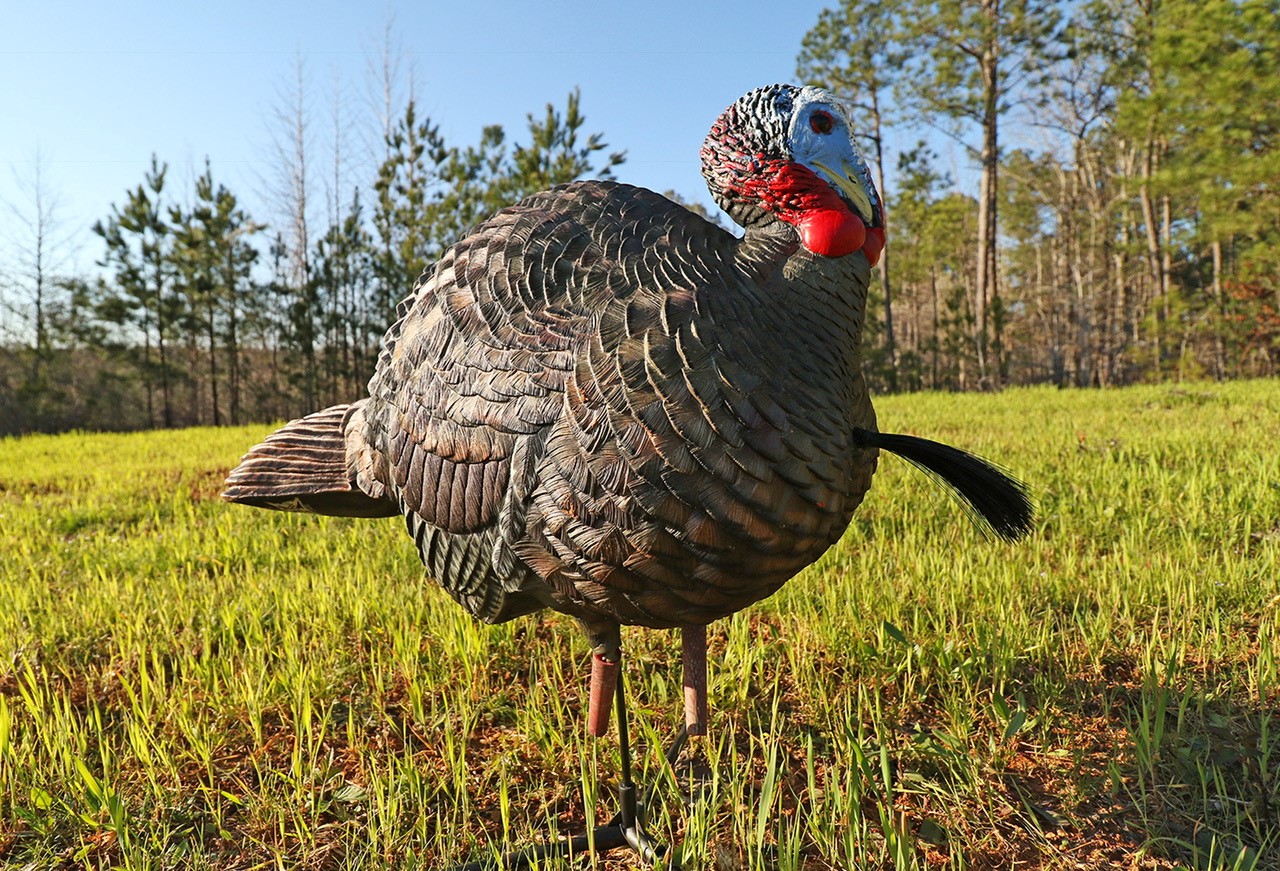
To project attractive activity, pair the 1/2-Strut Jake with the LCD Laydown Hen, LCD Breeder or LCD Feeder decoys. If the jake deke isn’t enough, the attractive position of the Breeder will help him finish his approach. The decoy is in a submissive position that is begging for a dominant tom to engage, or a passive bird to slip in while the 1/2-Strut is attending to his own lady.
Now let’s move to full-on aggression. The LCD Strutter Decoy is just that, a highly lifelike, mobile, inflatable strutter decoy that fits the bill for any property with an abundance of aggressive toms. But what I love most about this thing is its size. Overall, it’s smaller than most other full-strut decoys, 15 percent in fact, which I believe makes it very approachable, even for the birds that have had their tails whipped a time or two.
Keep in mind these decoys are inflatable. But I like to keep them inflated and carried in the Avian-X bags that come with each decoy. If you’re a run-and-gun type turkey hunter who is looking for top-shelf realism and portability, these dekes are for you. Plus lots of other great options.
Avian-X 1/2-Strut Jake: $119.99
Avian-X LCD Laydown Hen: $79.99
Avian-X LCD Breeder Hen: $79.99
Avian-X LCD Feeder Hen: $79.99
Avian-X LCD Strutter: $119.99
To see the fold-up and inflation process, check out this video.
Tip: These decoys also need a little TLC fresh out of the package. Take them out, let them sit at room temp for a day or so, but then a trip to the hot shower or time beneath a hair dryer will take out any remaining creases.
Of the multiple options MAD has to offer, the Spin-N-Strut really caught my eye. It’s a sho-nuff game changer for the hunters interested in adding motion to their decoy setup. Not only is this system very easy to set up and operate, it adds twice the motion that will attract any tom looking to protect his turf.
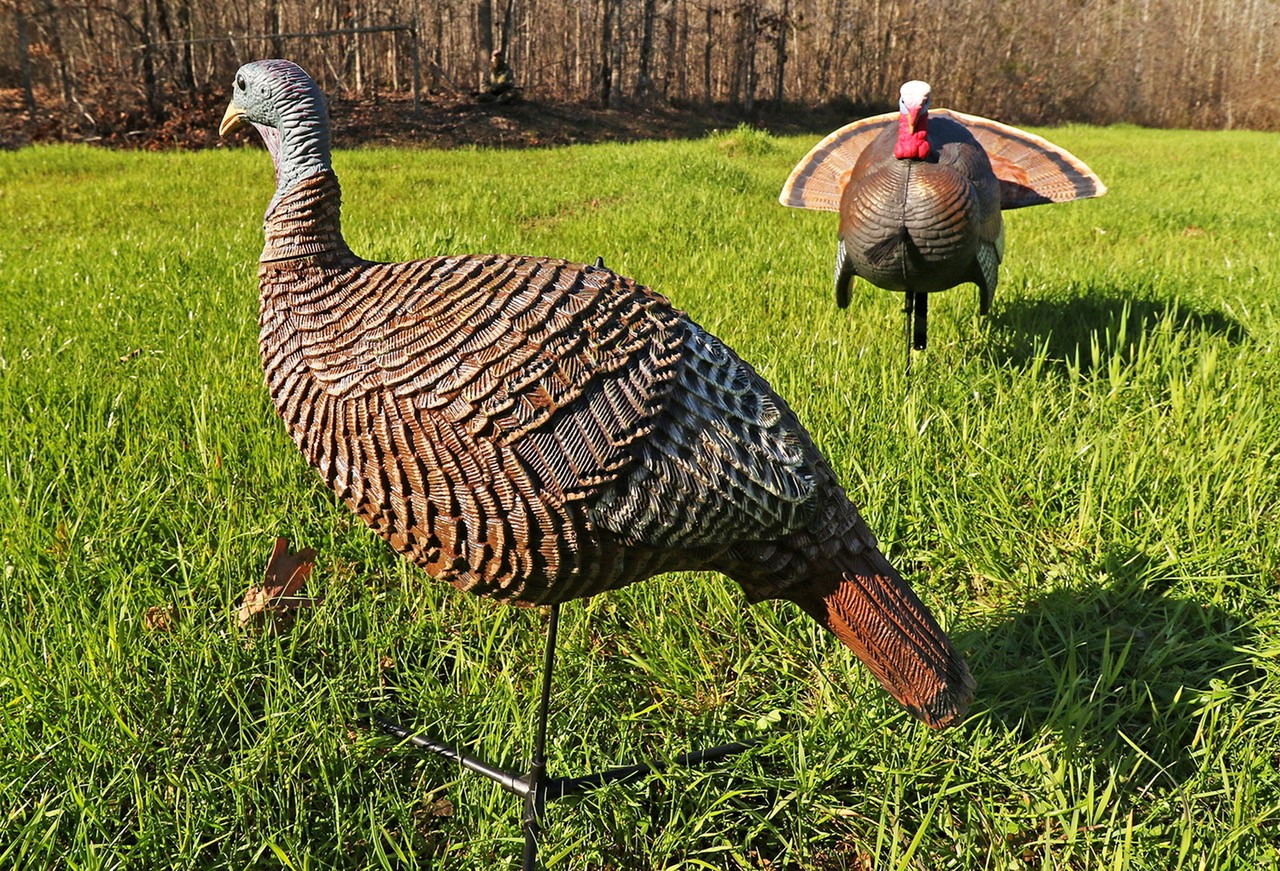
By simply pulling the included cord, the Spin-N-Strut will make a 90-degree turn, and then with an additional tug, the tail will come up, simulating a pirouetting gobbler as he breaks into full strut. This motion alone will pull turkeys from long distances to investigate and confront.
When paired with a MAD Shady Baby Breeding Hen, Shady Baby Feeding Hen and/or a Shady Baby Upright Hen, the MAD decoy family is a lethal combination. I really love the motion combined with the realistic coloring and detail, and an adjustable beard takes your options a step further — I prefer the jake profile.
MAD Spin-N-Strut: $139.99
MAD Shady Baby Breeding Hen: $45.09
MAD Shady Baby Feeding Hen: $47.03
MAD Shady Baby Upright Hen: $47.03
Tip: To take the Spin-N-Strut motion to the max, slightly bend the flat bar to the rear of the decoy, and you can also add a 5- to 6-inch eye-bolt to the mix to manipulate which direction the decoy spins. In my experience, toms will approach a full-strut decoy from the rear more often than not. Watch the video to see how I’ve adjusted the motion to achieve what I call the “perfect turn.”
One could say Dave Smith set the standard on high-definition turkey decoys — certainly the pioneer who refused to follow the norm. One thing is for certain: Since the first day DSDs hit the market, the turkey-decoy world has never been the same.
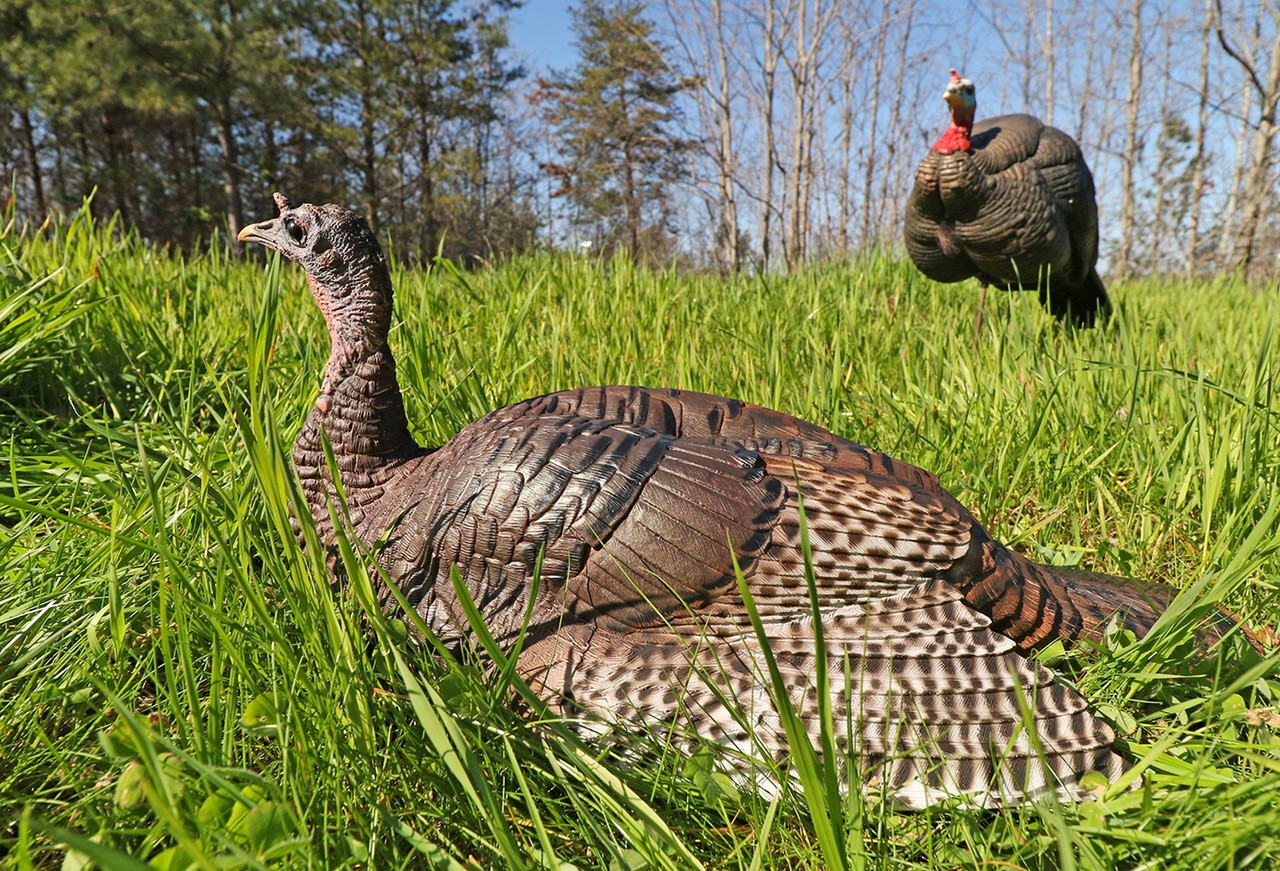
Dave Smith Decoys has a turkey decoy for every occasion, including a new and very innovative White Face Strutter that presents a passive strutting tom to any approaching turkeys — a more dominant bird will feature a bright red and blue face and neck — they have that option as well. But it hardly stops there. The entire DSD collection offers incredible detail and realism that turkeys simply believe is real.
New to the lineup this year is Mating Motion Pair that takes the “Springtime Jealousy” to a whole new level. Through movement created by an attached cord that runs through two eyebolts and beneath the Mating Hen, the breeding ritual is literally visualized. Any self-respecting turkey can’t help but confront the jake. A battle will follow — mark my words.
Look, there’s no arguing that it takes a sizable investment to outfit yourself with a spread of DSDs. However, once you experience decoys effectiveness, and appreciate high-quality workmanship that produces the type of results the decoys are known for, the expense is easier to swallow.
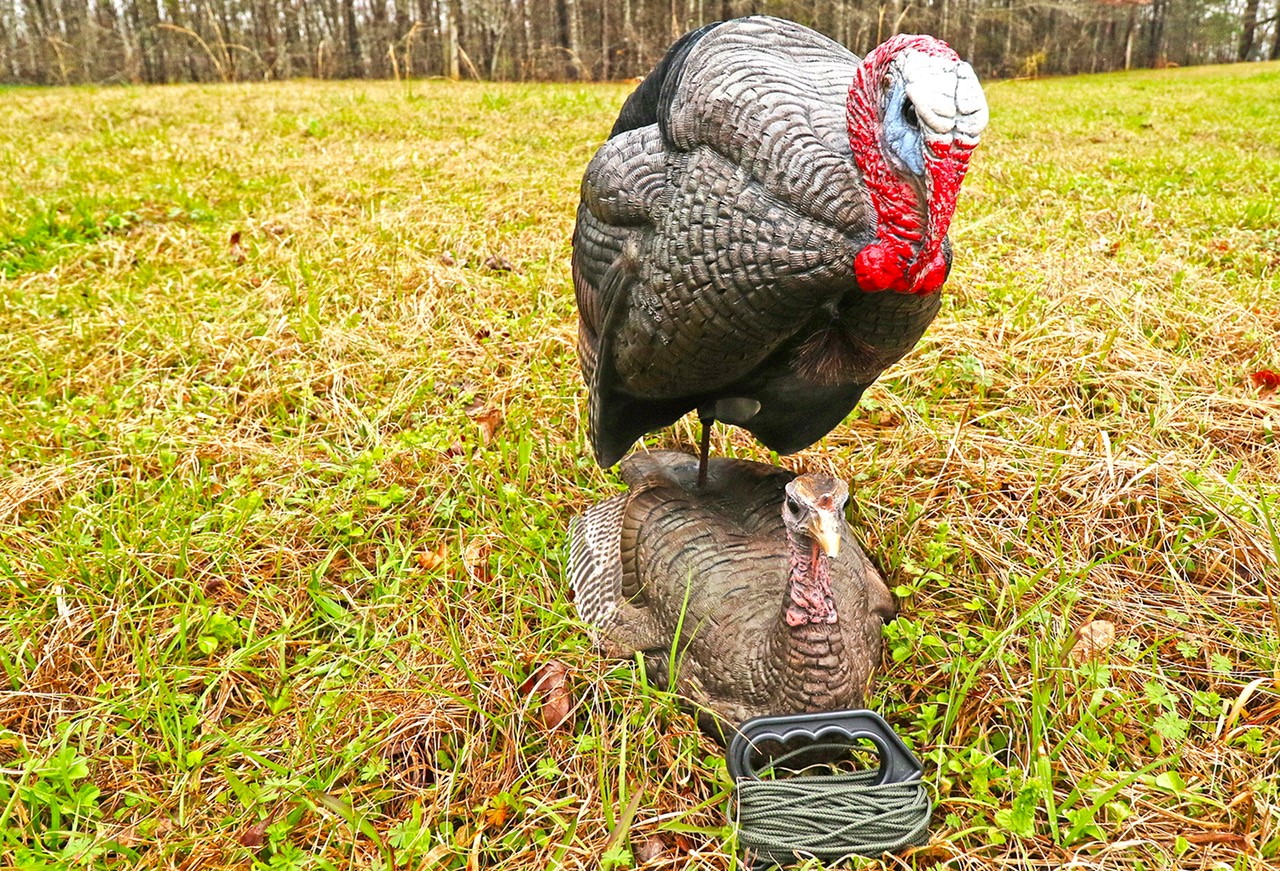
The DSD lineup features ultra-realistic paint and texturing that literally mirrors the iridescence of actual wild turkey feathers. And, the material each decoy is made out of is very durable and dependable with self-healing properties that forever hold it’s shape. Consider all of that technology jammed into a turkey decoy as your ROI.
DSD Turkey Flock: $474.99
DSD Mating Motion Pair: $299.99
DSD White Face Strutter: $199.99
Iowa Turkey Viciously Attacks DSD
Fanning has become a turkey-killing craze over the past several years, and it is one of the most exciting ways to shoot a turkey. This tactic has enabled me to always have an option, even when confronted with a large open ag field center-punched with a strutting gobbler.
Impossible to access? Not anymore.
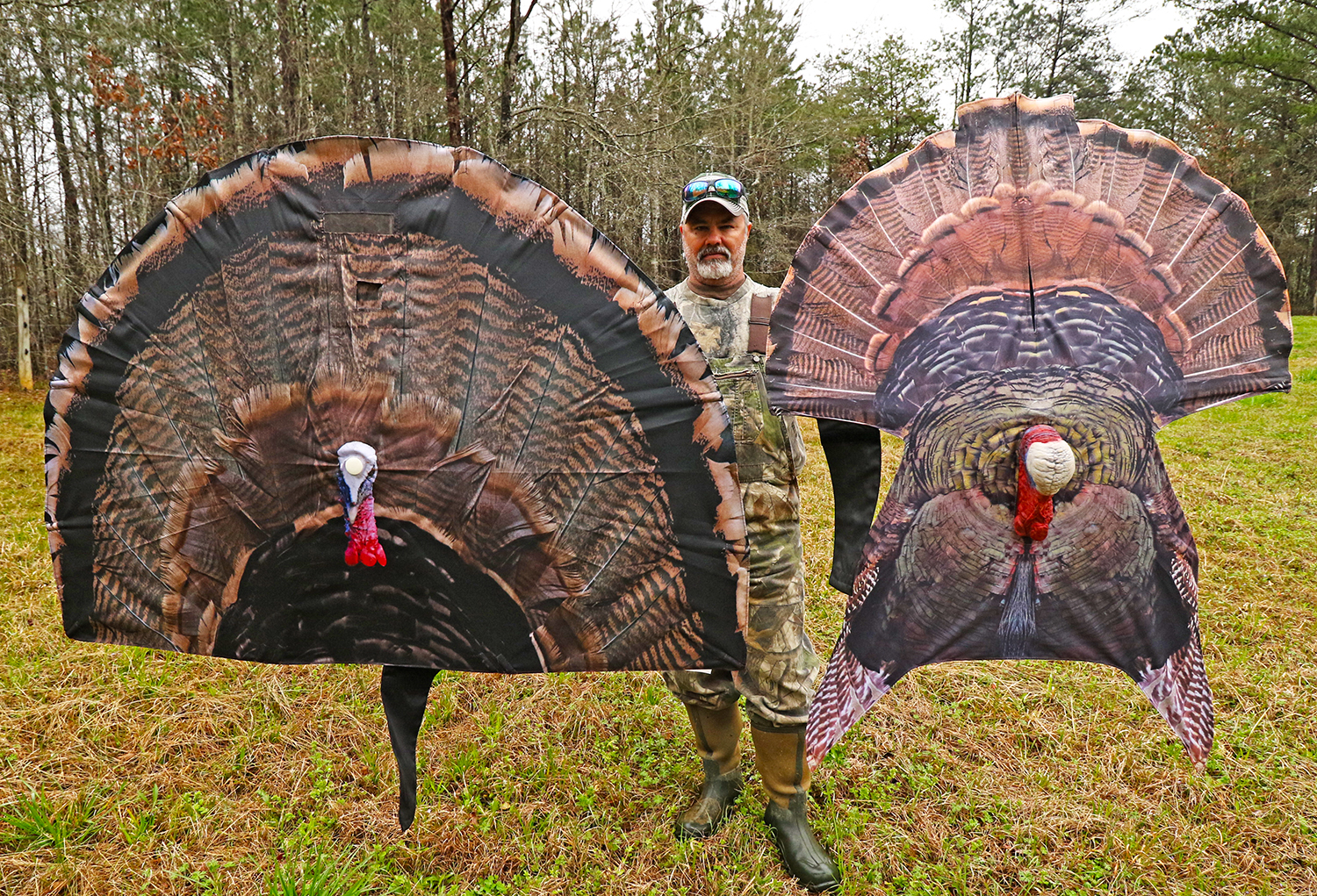
The TurkeyFan and JakeFan provide the perfect cover for the fanatical hunter willing to sneak, crawl or stalk to within range of a turkey using wide-open space as his cover. There are a few things to keep in mind when using this tactic, however.
First: ALWAYS keep safety as top priority. While it seems painfully obvious what is taking place when implementing this approach, there are stupid hunters out there who could mistake it for a real bird. You don’t want that. Know your property and who else might be hunting it.
Secondly: While not a hard-and-fast rule, this style of hunting generally works better in the afternoons when the hens have left the gobblers. If you can locate two lone gobblers you have the perfect scenario to execute the perfect sneak.
Third: Don’t approach too fast. Get to a point where the bird sees you, and stop. Move the fan side to side, and gauge his demeanor. He may allow you to make up some more ground, but ideally the end result is you shooting them in self-defense during a charge.
Experiment, that’s half the fun. Another weapon in your arsenal will only make you more lethal.
Movement
Posture and realism are critical components to consider when selecting the right decoy for your turkey hunting adventures. But don’t overlook the movement factor. Decoy movement can turn a close call into a dead, flopping turkey in a heartbeat.
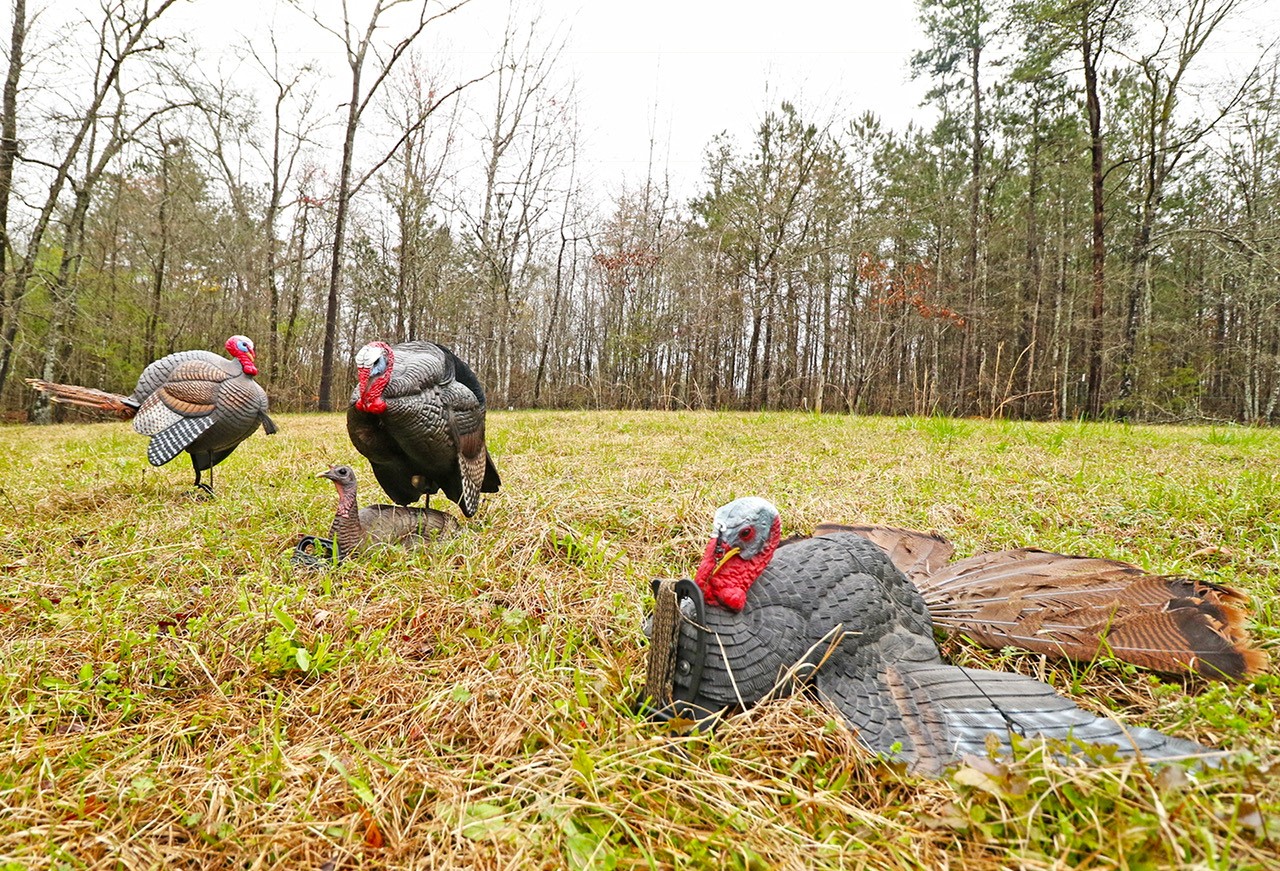
There are a few things to consider.
First, a good, level decoy stake will allow a decoy to move naturally with wind, which
sometimes is enough to close the deal. Years ago I took two Zebco 33 spincast fishing reels with me on a hunt. I attached one to the head of my Pretty Boy full-strut deke, and one to the tail end. And you wouldn’t believe the reaction it garnered from the turkeys.
They tore it up!
Whether you’re setting up a tempting MAD Spin-N-Strut, Primos Dirty B or the DSD Mating Motion Pair, adding movement will turn gawkers into finishers.
Movement can also be created in how you position your decoys. For example: I like to place a feeding hen about 50-60 yards from my set up facing directly at the point where I anticipate a shot. Then I’ll place another feeding hen about half way between the furthest decoy and my shooting position.
Depending on whether I’m bow hunting or using a shotgun, I’ll place the main attraction at 10 to 25 yards from my position. The way these decoys are set up creates the perception of motion TO a certain destination that ultimately ends up in your lap. I’ve used this tactic extensively with lots of success.
Timing
Another crucial element to keep in mind when selecting the right decoy for your hunt is time of year. Earlier in the year the pecking order is still being established and naturally more fighting occurs. Conversely, as the season is nearing its end the birds are more apprehensive to become confrontational after a couple months of combat. Keep that in mind as you choose which dekes to haul to the woods each day.
Early Season – For the most part, I’ll place more decoys than I might during late season. I take the flock approach as most birds are more grouped up early in the season. A decoy spread might include two to three feeding hens, a breeding hen directly in front of a jake or strutter, with another breeding or submissive hen in the mix.
Mid Season – I’ll usually trim the decoy spread down during the middle part of the season. On average a spread might consist of a jake overlooking a breeding hen with a single additional feeding hen.
Late Season – If I know there are still plenty of gobblers on a particular property, I’d be more inclined to keep a breeding pair in the mix. If I do use a male decoy, the Funky Chicken will get the nod here. But for the most part, I’ll often take one or two feeding hens only, just to add visual confirmation of communicating birds. Staying conservative will win-over the aggressive approach more often than not.

Overcoming The Dilemma
The bottom line is simple: Do what makes the most sense for you. The birds haven’t really changed over the years, but the hunters have. I can assure you, beyond the shadow of a doubt that high-definition turkey decoys are more affective than their predecessor.
The turkeys don’t play by the rules, why should you?
If by making the investment you can convince a wary tom to come only a few steps closer, isn’t that worth it? Isn’t the entire purpose of your springtime trips afield to bring home an impressive longbeard? Of course the overall experience is our goal — I share those sentiments — but success is the honest objective.
My old school, fold-up foam decoys haven’t seen the light of day since I added realistic decoys, like what we’ve discussed above, to my turkey-hunting roster.
And that’s because they work.
